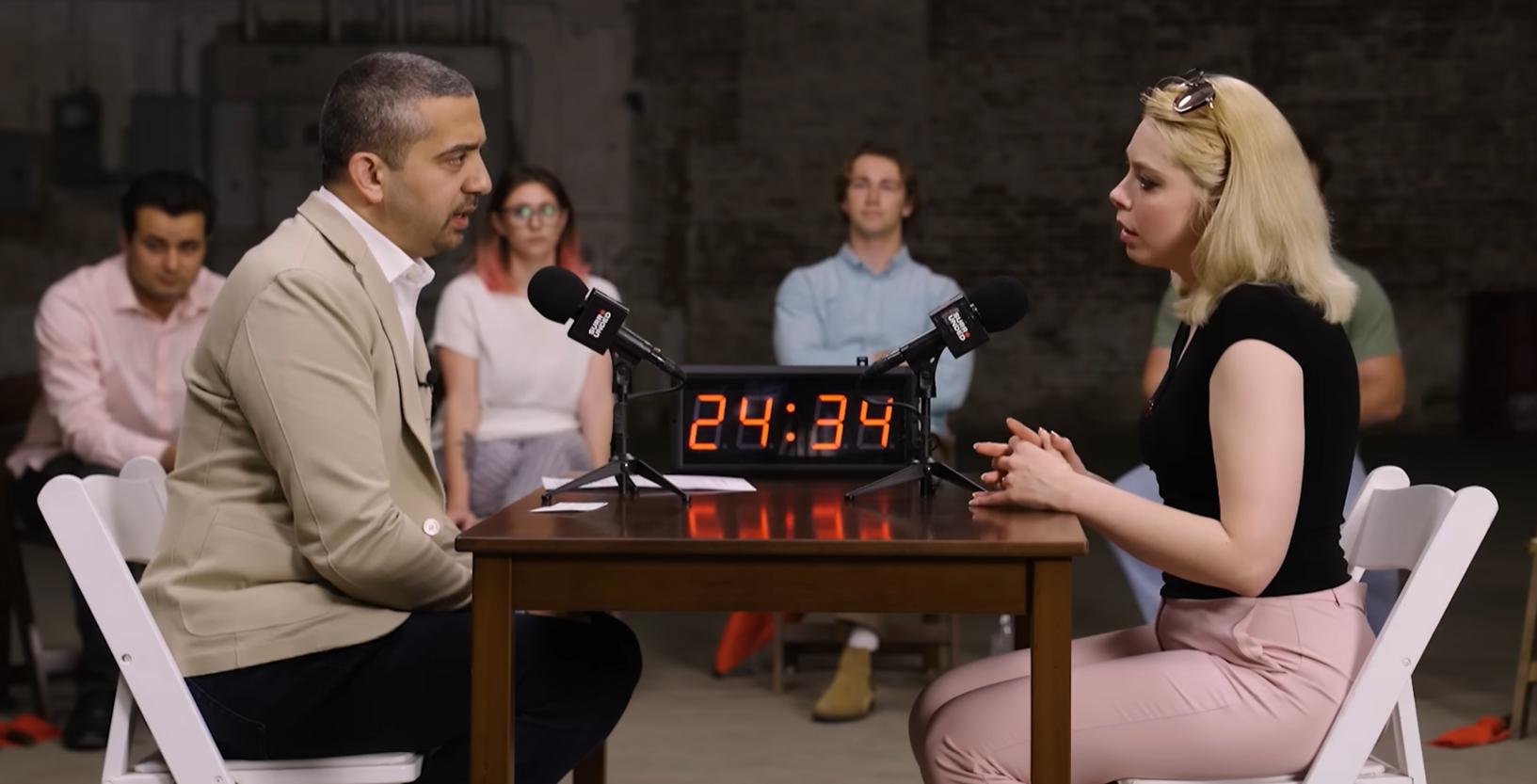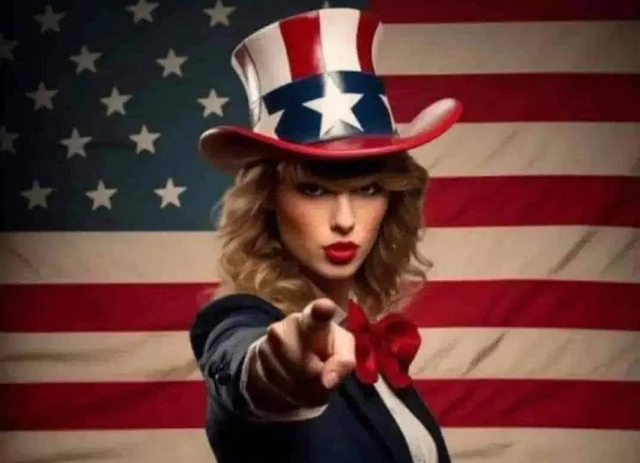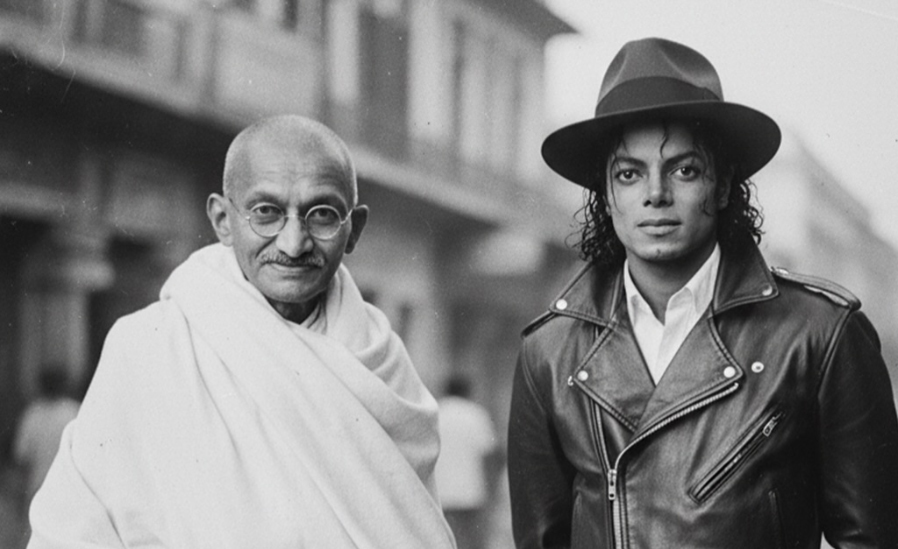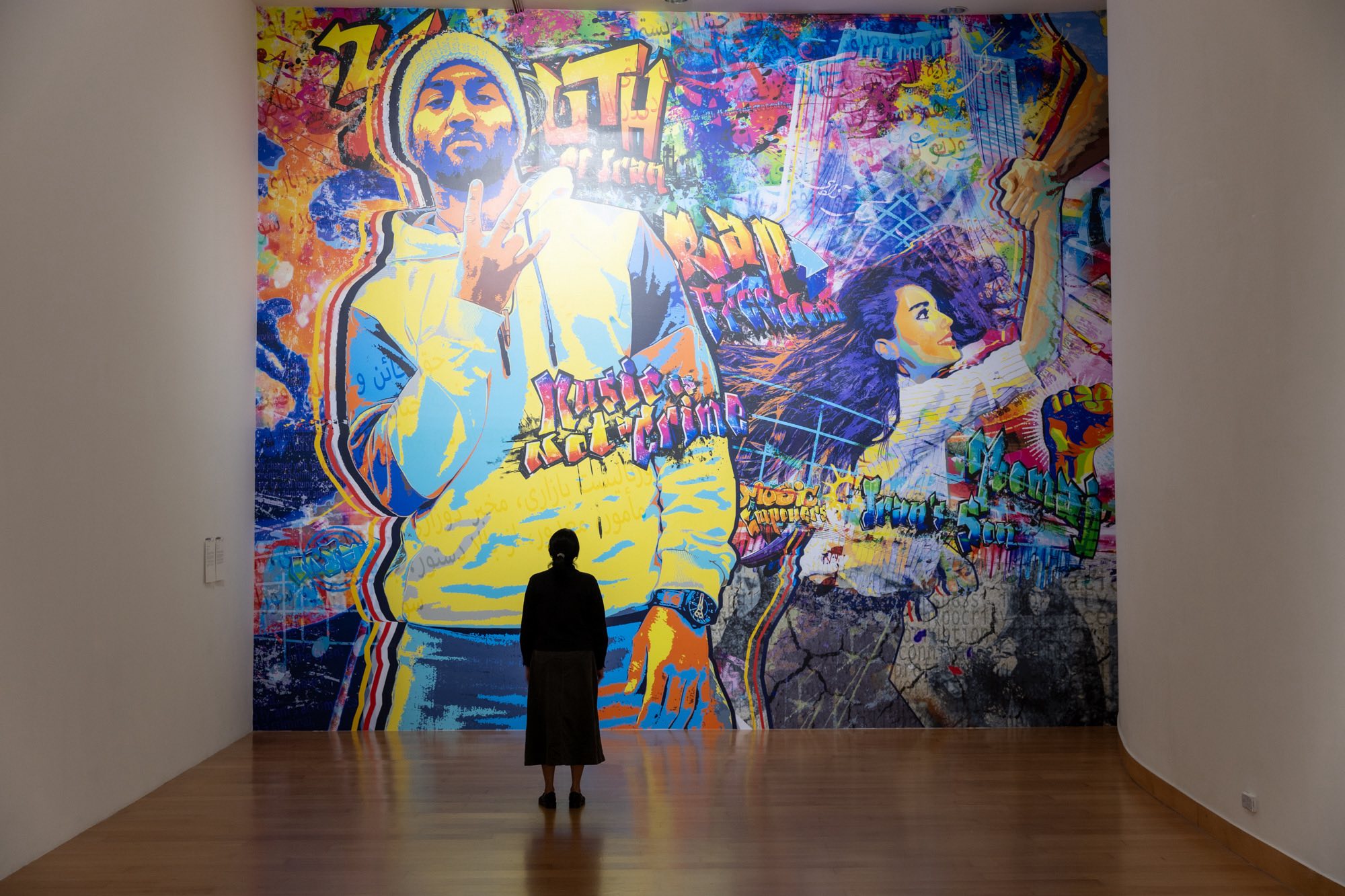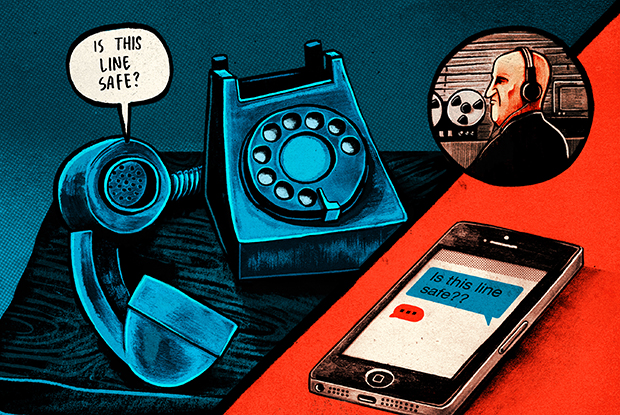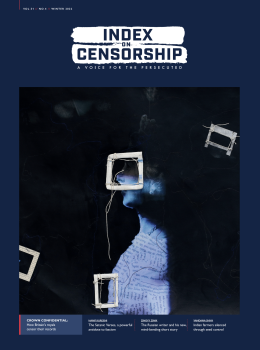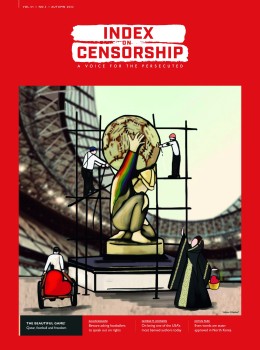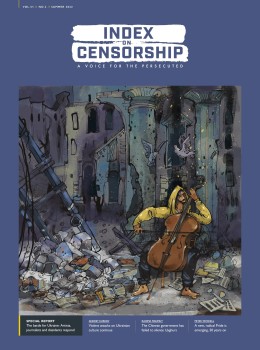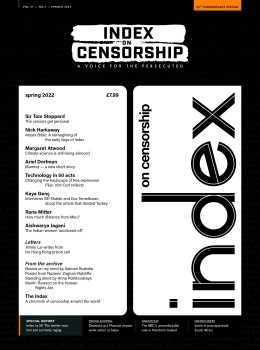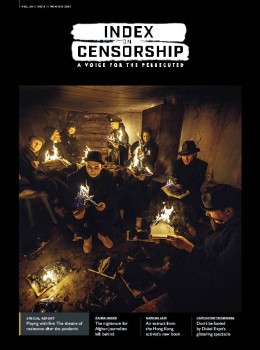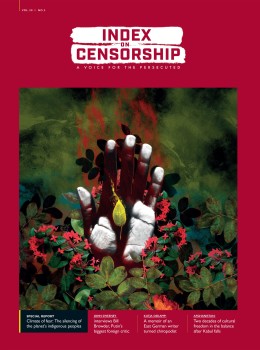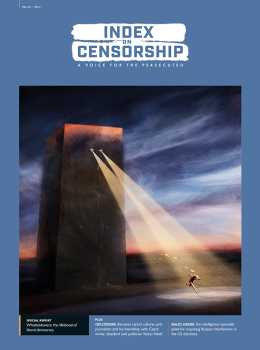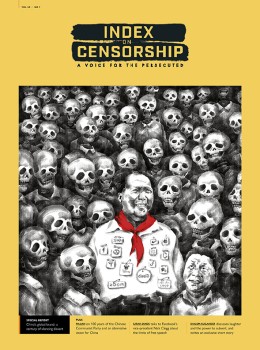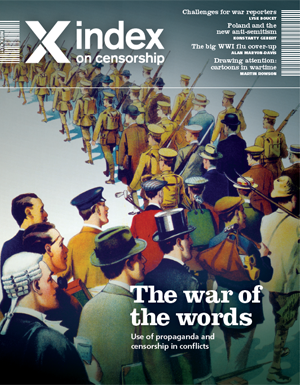
This article is part of the spring 2014 issue of the global quarterly Index on Censorship magazine, with a special report on propaganda and war. Click here to subscribe to the magazine.
In conjunction with the Cambridge Festival of Ideas 2015, we will be publishing a series of articles that complement many of the upcoming debates and discussions. We are offering these articles from Index on Censorship magazine for free (normally they are held within our paid-for archive) as part of our partnership with the festival. Below is an article by cartoonist and author Martin Rowson, who regularly draws for the magazine, on the power of propaganda in wartime, taken from the spring 2014 issue. It’s a great starting point for those who plan to attend the War, Censorship and Propaganda: Does It Work session at the festival this year.
Index on Censorship is a global quarterly magazine with reporters and contributing editors around the world. Founded in 1972, it promotes and defends the right to freedom of expression.
As a political cartoonist, whenever I’m criticised for my work being unrelentingly negative, I usually point my accusers towards several eternal truths.
One is that cartoons, along with all other jokes, are by their nature knocking copy. It’s the negativity that makes them funny, because, at the heart of things, funny is how we cope with the bad – or negative – stuff.
Whether it’s laughing at shit, death or the misfortunes of others, without this hard-wired evolutionary survival mechanism that allows us to laugh at the awfulness running in parallel with being both alive and human, apes with brains the size of ours would go insane with existential terror as soon as the full implications of existence sink in. Which, for most people, would be when you’re around three years old.
And if that doesn’t persuade them, I usually then try to describe that indescribable but palpable transubstantiation that occurs when you shift from the negative to the positive, and a cartoon sinks from being satire to becoming propaganda.
Though here, of course, I’m not being entirely honest, because in many ways cartoons are propaganda in its purest form. This is because the methodology of the political cartoon has most in common with the practices of sympathetic magic and, likewise, its purposes are invariably malevolent.
Indeed, I’ve often described caricature in particular and political cartooning more generally as a type of voodoo, doing damage at a distance with a sharp object, in this case (usually) a pen.
Certainly the business of caricature is a kind of shamanist shape-shifting, distorting the appearance of the victim in order to bring them under the control of the cartoonist and subjecting them thereafter to ridicule or opprobrium. In short, political cartoons should truly be classified not as comedy but as visual taunts. And taunts, of course, have been an integral ingredient of warfare for millennia.
Within the twisted plaiting of taunts, posturing and brinkmanship that ultimately ended in the hecatombs of the Western Front in World War I you can just about tease out one thread trailing back to a cartoon.
The original sketch for the allegorical 1896 cartoon Nations of Europe: Join in Defence of Your Faith! was by Kaiser Wilhelm II of Germany, though he left the job of the finished artwork to professionals. Its purpose was to stiffen the resolve of European leaders against the “yellow peril” coming from east Asia, and to this end the Kaiser presented a copy of the cartoon to his cousin Tsar Nicholas II of Russia.
It’s generally agreed that the cartoon played a small but significant part in influencing the Tsar’s confrontational policy towards Japan, which ended in Russia’s humiliating defeat in the 1904-05 Russo-Japanese war.
The subsequent revolutions, regional wars and growing European instability erupted nine years later with the general mobilisation of the Great Powers, and the cartoonists were mobilised along with everyone else.
Although a perennial taunt against the Germans is that they have no sense of humour, they had as rich a tradition of visual satire as anyone else. In the pages of both Punch and the German satirical paper Simplicissimus, the enemy was caricatured identically as alternatively preposterous and terrifying. Both sides showed the other in league with skeletal personifications of Death, or transformed into fat clowns, foul or dangerous animals or, in British cartoons about Germans, as sausages.
There were also scores of cartoons showing German soldiers bayoneting Belgian babies in portrayals of “The Beastly Hun” and, later, cartoons showing the Germans harvesting the corpses of slain soldiers for fats to advance their war effort.
All sides taunted each other by attacking their nations’ supposed leaders, using the caricaturist’s typical tools. Thus the Kaiser, mostly thanks to his waxed moustache, acted as a synecdoche for Germany’s defining perfidy. In one cartoon from 1915, when Britain’s George V stripped his cousin, the Kaiser, of his Order of the Garter, his garterless stocking slips down, revealing a black and hairy simian leg. In 1914, meanwhile, the German cartoonist Arthur Johnson (his father was an American) showed the British Royal Family, German by descent, in a camp for enemy aliens.
These taunting cartoons bore little relation to the realities of modern warfare, and most of them would now be dismissed purely as rather ham-fisted propaganda. This shouldn’t downplay their effectiveness, however.
A century earlier Napoleon Bonaparte admitted he feared the damage done by James Gillray’s caricatures of him more than he feared any general, because Gillray always drew him as very short. (To bring this up to date, Le Monde’s cartoonist Plantu told me that every time he drew Nicolas Sarkozy as short, Sarkozy complained personally to his editor; the next cartoon would make him even shorter, and Sarkozy would complain again, until in the end Plantu drew the French president as just a head and feet.)
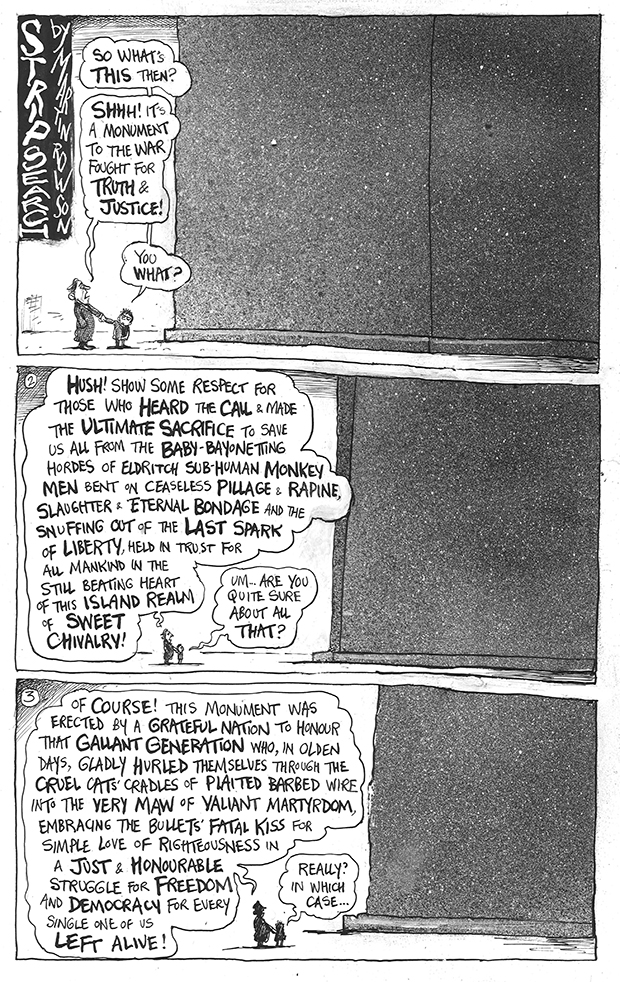
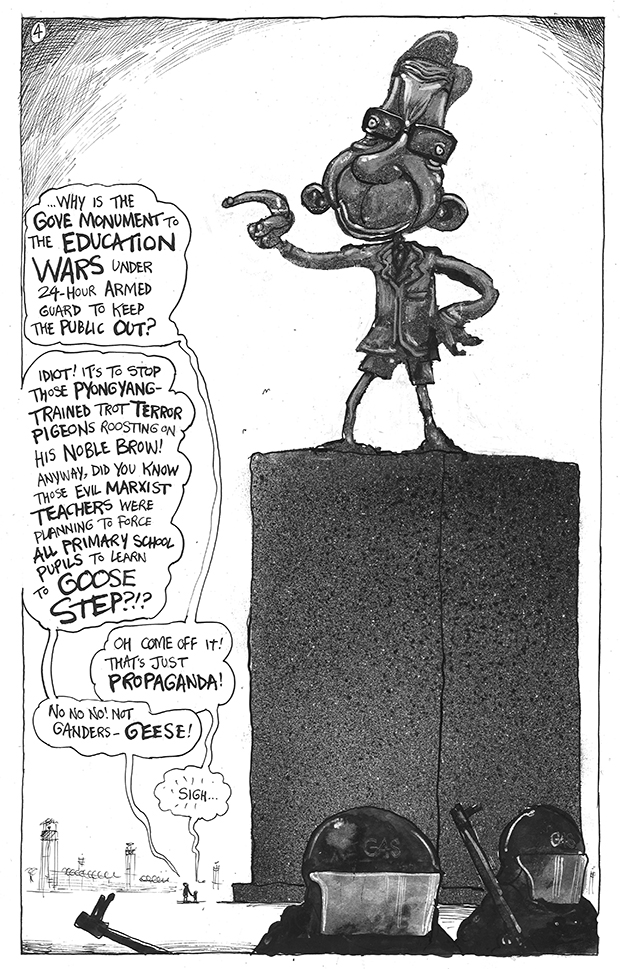
Nonetheless, an unforeseen consequence of this barrage of caricature was that in the end people stopped believing it to be anything more than merely caricature: the truth that should be exposed by the exaggeration got lost. In the 1930s, many people assumed reports of the genuine atrocities of the Nazis were, like the bayoneted babies or harvested corpses blamed on the Kaiser, just propaganda.
Posterity shouldn’t concern cartoonists. We’re just journalists responding to events with a raw immediacy. This is what gives the medium a great deal of its heft.
Some cartoons, however, encapsulate a time or an event and so become part of the more general visual language. Gillray’s The Plum Pudding in Danger is a perfect example, depicting the specific geopolitical struggle between William Pitt and Napoleon in 1805, while also capturing eternal truths about geopolitics itself. But I’m not aware of any political cartoons from World War I that do the same thing.
And yet the medium operates in many ways, and the most effective and popular cartoonist of World War I was undoubtedly Bruce Bainsfather, a serving artillery officer who drew gag cartoons about the slapstick of everyday life in the trenches in his series featuring “Old Bill”. The serving soldiers loved these cartoons, and they are another instance of humour being used to make the harshest imaginable reality simply bearable.
The other truly great cartoon to emerge from the World War I was published after it was all over. In his extraordinarily prophetic drawing Peace and Future Cannon Fodder for the Daily Herald, Will Dyson showed the Allied victors of the war exiting the Versailles peace conference and the French prime minister Georges Clemenceau saying: “Curious! I seem to hear a child weeping.” Behind a pillar a naked infant labelled “1940 class” is crying into its folded arms.
None of the protagonists in the next war doubted the power or importance of cartoons. Again, they were used by all sides to taunt and vilify their foes, perhaps most notoriously in Der Sturmer, the notorious anti-semitic paper edited by Julius Streicher, later hanged at Nuremburg.
Simplicissimus was, once more, taunting the British, this time drawing wartime prime minister, Winston Churchill, as a fat and murderous drunk; in the Soviet Union Stalin’s favourite cartoonist, Boris Yefimov, returned the compliment to the Nazi leadership (Yefimov’s older brother Mikhail first employed him on Pravda before being purged and executed in 1940; Boris survived him by 68 years, dying aged 108 in 2008). No cartoonist in either country would have dared caricature their own totalitarian politicians, but they were given full rein to exercise their skills on their nation’s enemies. In Britain, with its largely legally tolerated history of visual satire going back to 1695, things were slightly different, though also sometimes the same.
The New Zealand-born cartoonist David Low discovered in 1930 from a friend that Hitler, three years away from taking power in Germany, was an admirer of his work. Low did what any other cartoonist would do in similar circumstances and acknowledged his famous fan by sending him a signed piece of original artwork, inscribed “From one artist to another”.
It’s unknown what happened to the cartoon – maybe it was with him right to the end, in the bunker – but it soon became apparent that Hitler had mistaken Low’s attacks on democratic politicians for attacks on democracy itself. He was soon disabused. Low harried the Nazis all the way from the simple slapstick of The Difficulty of Shaking Hands with Gods of November 1933 to the bitterness of his iconic cartoon Rendezvous in September 1939, so much so that in 1936 British Foreign Secretary Lord Halifax, after a weekend’s shooting at Hermann Goering’s Bavarian hunting lodge, told Low’s proprietor at the Evening Standard, Lord Beaverbrook, to get the cartoonist to ease up as his work was seriously damaging good Anglo-German relations. Low responded by producing a composite cartoon dictator called “Muzzler”.
The Nazis had a point that Low entirely understood, and it was why he, along with many other cartoonists – Victor “Vicky” Weisz, Leslie Illingworth and even William Heath Robinson – were all on the Gestapo’s death list. In a debate on British government propaganda in 1943, a Tory MP said Low’s cartoon were worth all the official propaganda put together because Low portrayed the Nazis as “bloody fools”. Low himself later expanded on the point, comparing his work, which undermined the Nazis through mockery, with the work of pre-war Danish cartoonists who unanimously drew them as terrifying monsters. Low’s point was that it’s much easier to imagine you can beat a fool than a monster, and taunting your enemies as being unvanguishably frightening is no taunt at all.
The enduring efficacy of cartoons’ dark and magical voodoo powers were acknowledged in victory, when both Low and Yefimov were official court cartoonists at the Nuremburg war crimes tribunals (Low claimed Goering tried to outstare him from the dock): now the taunting was part of the humiliation served up with the revenge. Likewise, when Mussolini was executed by Italian partisans, the editor of the Evening Standard, Michael Foot, marked the dictator’s demise by giving over all eight pages of the paper to Low’s cartoons of Mussolini’s life and career.
Of course Low, unlike Yefimov, was actively hostile on the Home Front as well, producing cartoons critical of both the military establishment and Churchill. When Low’s famous creation Colonel Blimp, the portly cartoon manifestation of boneheaded reactionary thinking, took on fresh life in the Powell and Pressburger movie The Life and Death of Colonel Blimp, Churchill tried to have the film banned. When the Daily Mirror’s cartoonist Philip Zec responded to stories about wartime profiteering by contrasting them with attacks on merchant shipping in his famous cartoon The Price of Petrol has Been Increased by One Penny – Official, both Churchill and Home Secretary Herbert Morrison seriously considered shutting down the newspaper. (When the Guardian cartoonist Les Gibbard pastiched Zec’s cartoon during the Falklands war 40 years later, the Sun called for him to be tried for treason.)
And yet cartoons, for all their voodoo power, can still spiral off into all sorts of different ambiguities thanks to the way they inhabit different spheres of intent. Are they there to make us laugh, or to destroy them? Or both?
Ronald Searle drew his experiences while he was a prisoner of war of the Japanese, certainly on pain of death had the drawings been discovered, but taking the risk in order to stand witness to his captors’ crimes. Just a few years later, many of his famous St Trinian’s cartoons don’t just deal with the same topics – cruelty and beheadings – but share identical composition with his prisoner of war drawings.
And when Carl Giles, creator of the famous cartoon family that mapped and reflected post-war British suburban life weekly in the Sunday Express, was present as an official war correspondent at the liberation of the Bergen-Belsen concentration camp, the camp’s commandant, Josef Kramer, revealed he was a huge fan of Giles’ work and gave him his pistol, a ceremonial dagger and his Nazi armband in exchange for the promise that Giles would send him a signed original. As Giles explained later, he failed to keep his part of the bargain because by the time he got demobbed Kramer had been hanged for crimes against humanity.
Those twinned qualities of taunting and laughter go some way to explaining the experience of cartoonists in the so-called war on terror, if not the power of their work. In the aftermath of 9/11, in the Babel of journalistic responses to what was without question the most visual event in human history, then visually re-repeated by the media that had initially reported it, the cartoonists were the ones who got it in the neck. While columnists wrote millions of words of comment and speculation, and images captured by machines were broadcast and published almost ceaselessly, the images produced via a human consciousness were, it seems, too much to stomach for many. Cartoonists had their work spiked, or were told to cover another story (there were no other stories). In the US some cartoonists had their copy moved to other parts of the paper, or were laid off. One or two even got a knock on the door in the middle of the night from the Feds under the provisions of the Patriot Act.
Despite a concerted effort by some American strip cartoonists to close ranks on Thanksgiving Day 2001 and show some patriotic backbone, the example of Beetle Bailey flying on the back of an American Eagle didn’t really act as a general unifier. Unlike in previous wars, there was no unanimity of purpose among cartoonists. An editorial in The Daily Telegraph accused me, along with Dave Brown of The Independent and The Guardian’s Steve Bell, of being “useful idiots” aiding the terrorist cause due to our failure to fall in line.
The war on terror and its Iraqi sideshow were anything but consensus wars, and many cartoonists articulated very loudly their misgivings. These included Peter Brookes of the Murdoch-owned Times drawing cartoons in direct opposition to his paper’s editorial line. This has always been one of visual satire’s greatest strengths: sometimes a cartoon can undermine itself.
Moreover, because a majority of cartoons were back in their comfort zone of oppositionism, the taunting had less of the whiff of propaganda about it. Nor was there ever any suggestion in Britain of government censorship of any of this.
That said, the volume of censuring increased exponentially, thanks entirely to the separate but simultaneous growth in digital communication and social media. Whereas, previously, cartoons might elicit an outraged letter to an editor – let alone a death threat from the Gestapo – the internet allowed a global audience to see material to which thousands of people responded, thanks to email, with concerted deluges of hate email and regular death threats. I long since learned to dismiss an email death threat as meaningless – a real one requires the commitment of finding my address, a stamp and possibly a body part of one of my loved ones – but it’s the thought that counts.
More to the point was the second front in the culture-struggle at the heart of the war on terror, in which both sides fought to take greater offence. Amid the bombs, bullets and piles of corpses across Iraq, Afghanistan, Bali, Madrid, London and all the other places, the greatest harm you could suffer, it seemed was that you might be “offended”. People sent me hate emails and threatened to kill me and my children because they were “offended” by my depiction of George Bush, or by a cartoon criticising Israel, or a stupid humourous drawing of anything that might mildly upset them or their beliefs.
It was into this atmosphere that the row over the cartoons of Mohammed published by the Danish newspaper Jyllands Posten erupted, resulting in the deaths of at least 100 people (none of them cartoonists, but most of them Muslims, and many shot dead by Muslim soldiers or policemen). But that, of course, is another story. And – who knows? – may yet prove to be another war.
Martin Rowson’s cartoons appear regularly in The Guardian and Index on Censorship. His books include The Dog Allusion, Giving Offence and Fuck: the Human Odyssey.
© Martin Rowson and Index on Censorship
Join us on 25 October at the Cambridge Festival of Ideas 2015 for Question Everything an unconventional, unwieldy and disruptive day of talks, art and ideas featuring a broad range of speakers drawn from popular culture, the arts and academia. Moderated by Index on Censorship CEO Jodie Ginsberg.
This article is part of the spring 2014 issue of the global quarterly Index on Censorship magazine, with a special report on propaganda and war. Click here to subscribe to the magazine.


